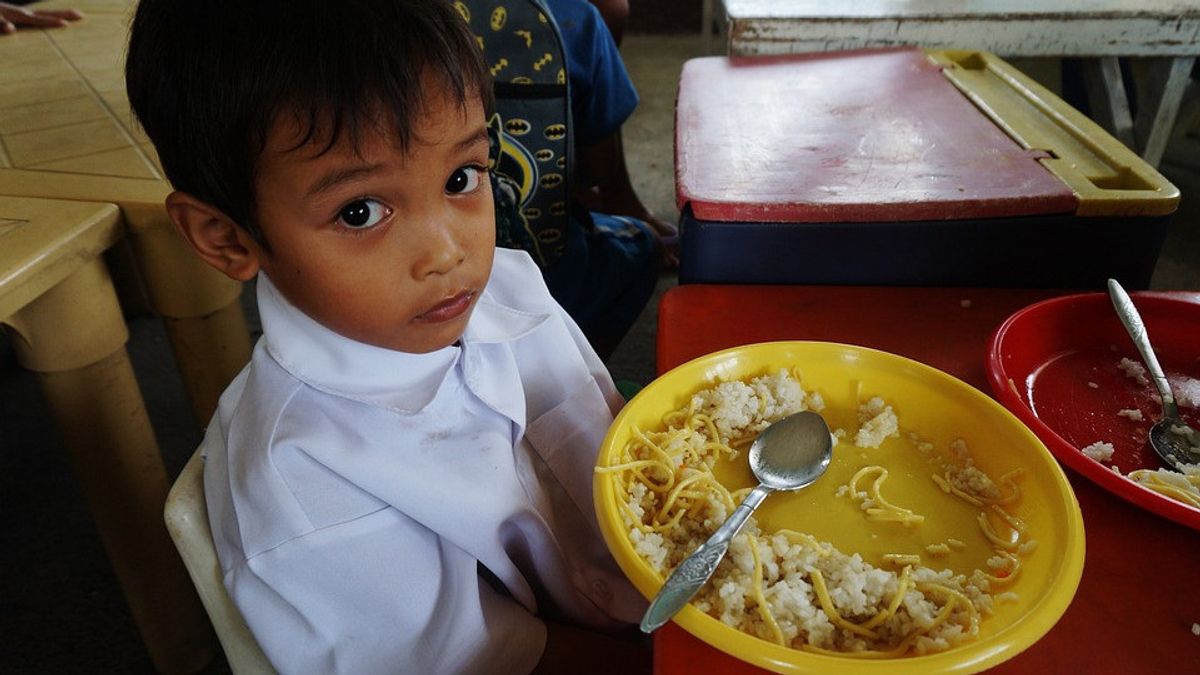YOGYAKARTA Children do not want to eat rice is one of the problems that is often faced by a parent. This condition most often occurs in children aged 1-3 years.
Adapting Kids Health, rice is one of the sources of energy because it contains complex carbohydrates. Children aged 2 years and over need at least calorie intake from carbohydrates of around 50-60 percent.
Therefore, many parents are worried when their children like to choose food and become difficult or don't want to eat rice.
Compiled by VOI from various sources, Sunday, January 15, 2022, here are some things you can do when your child becomes a picky ether (selected-food) and reluctant to eat rice:
When the baby is hungry half an hour before lunch, don't give him snacks. Giving snacks close to meal time will actually make the child full quickly, following the Smart Parenting page.
Not only that, giving snacks close to meal times can also make your little one not want to eat rice and will refuse other foods.
To overcome this, give snacks at the right time, which is 3-4 hours after the main food is eaten. Why? Because in that period of time the stomach will work to process the food that was previously eaten.
The second way to deal with children who do not want to eat rice is to process rice into another, more attractive food.
For example, processing plain rice into fried rice, grilled rice, chicken porridge or other foods.
Just so you know, rice is not the only source of complex carbohydrates. If the child doesn't want to eat rice, give him carbohydrate intake from other foods, such as bread, noodles, potatoes, sweet potatoes or oatmeals. After that, try slowly to provide rice intake again.
When your child doesn't want to eat rice, you have to be a good example for your little one. According to the Indonesian Pediatrician Association, parental habits affect child habits.
For example, if parents are reluctant to eat vegetables, children can also imitate it. The same thing can also happen to the intake of rice.
If you have a habit of choosing food, it is possible for your child to imitate this habit.
Theoretically, milk can meet the nutritional needs of the baby. However, parents need to pay attention to the amount of the gift.
Giving too much milk can make the child full. If that's the case, the child will be lazy to eat.
IDAI recommends providing a distance between meals for about three hours. Its function is to cause a cycle of hunger and satire so that children will eat enough when they eat.
Avoid giving children too much food when your child is reluctant to eat rice. The reason is, this can make children feel full.
The solution, serve rice in a smaller portion than usual. There is a possibility that children want to eat it even if it's only a little.
If it is difficult for children to eat rice, you should not force them to eat it. Let the urge to eat rice come from yourself. If they show a sign they don't want to eat rice, wait about 10-15 minutes, after that, offer it back without forcing it.
That's the information on how to deal with children who don't want to eat rice. May it be useful!
The English, Chinese, Japanese, Arabic, and French versions are automatically generated by the AI. So there may still be inaccuracies in translating, please always see Indonesian as our main language. (system supported by DigitalSiber.id)













